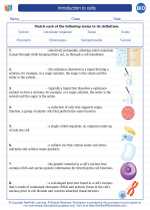Proteins
Proteins are macromolecules made up of amino acids. They are essential for the structure, function, and regulation of the body's tissues and organs. There are many different types of proteins, each with specific roles in the body.
Structure of Proteins
Proteins are composed of long chains of amino acids. Each amino acid has a central carbon atom, a hydrogen atom, an amino group, a carboxyl group, and a side chain (R group) that gives each amino acid its unique properties. These amino acids are linked together by peptide bonds to form a polypeptide chain, which then folds into a specific three-dimensional structure.
Functions of Proteins
Proteins have a wide range of functions in the body, including:
- Enzymes: Proteins that catalyze chemical reactions in the body.
- Structural support: Proteins such as collagen provide structural support for tissues and organs.
- Transport: Proteins like hemoglobin transport molecules such as oxygen in the blood.
- Immune function: Antibodies are proteins that help the body defend against pathogens.
- Regulation: Some proteins act as hormones or transcription factors, regulating various cellular processes.
Protein Synthesis
Protein synthesis involves two main processes: transcription and translation. During transcription, the DNA sequence of a gene is transcribed into a complementary RNA sequence. This RNA, called messenger RNA (mRNA), then undergoes translation, where it is used as a template to assemble a specific sequence of amino acids into a polypeptide chain.
Protein Structure and Function
The structure of a protein is closely related to its function. The specific sequence of amino acids determines how the protein will fold into its three-dimensional shape, and this shape ultimately determines the protein's function in the body.
Study Tips
- Memorize the 20 common amino acids and their properties, such as polarity and charge.
- Understand the process of protein synthesis, including transcription and translation.
- Learn the different types of proteins and their functions in the body.
- Practice drawing and labeling the structure of an amino acid and a peptide bond.
[Proteins] Related Worksheets and Study Guides:
.◂Biology Worksheets and Study Guides High School. Introduction to cells
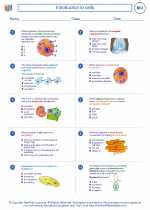
 Worksheet/Answer key
Worksheet/Answer key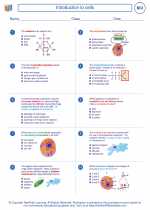
 Worksheet/Answer key
Worksheet/Answer key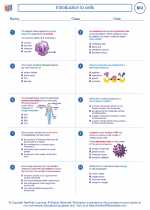
 Vocabulary/Answer key
Vocabulary/Answer key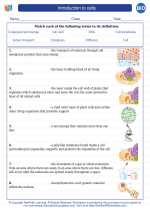
 Vocabulary/Answer key
Vocabulary/Answer key
 Vocabulary/Answer key
Vocabulary/Answer key
 Vocabulary/Answer key
Vocabulary/Answer key